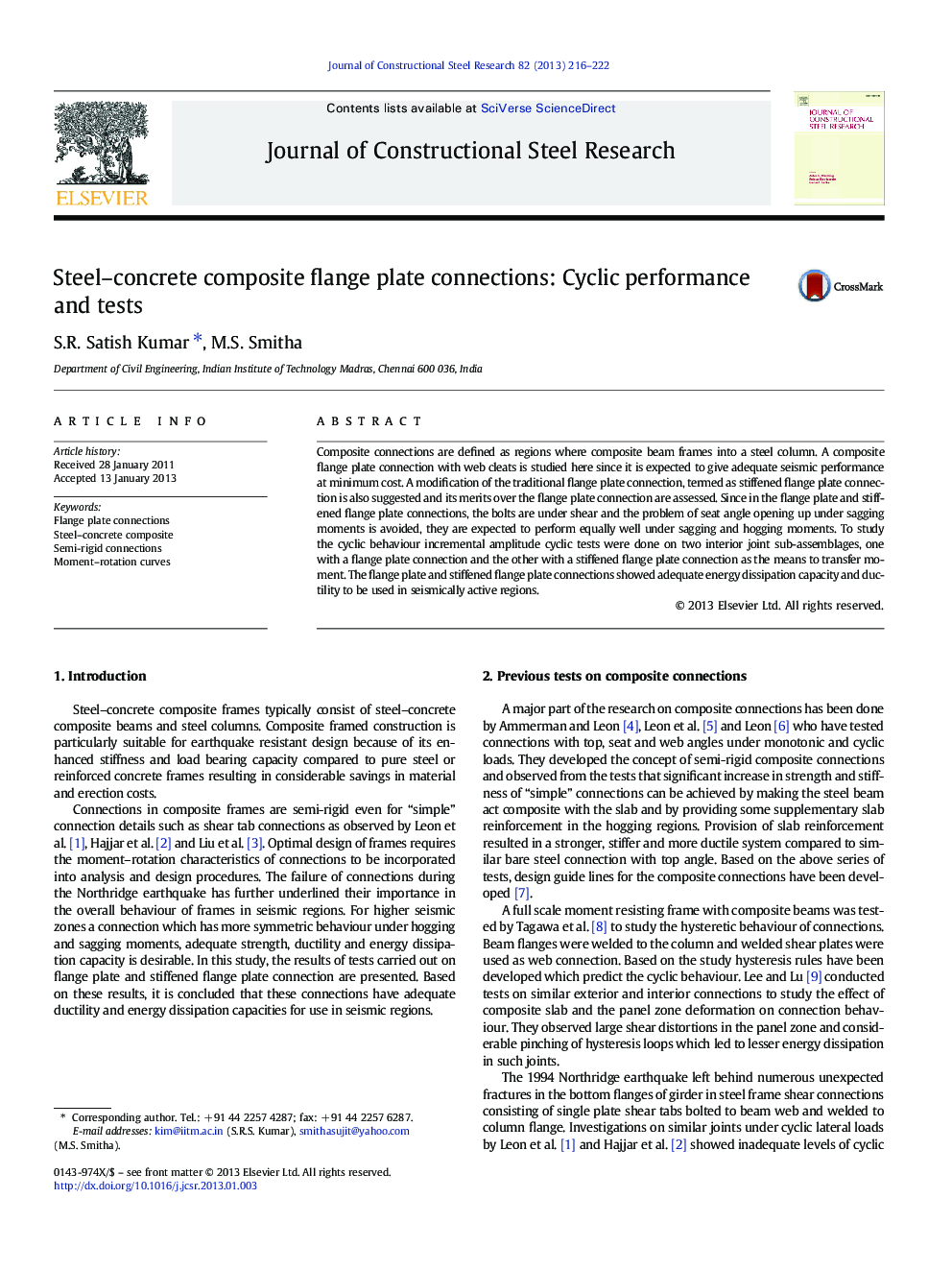| Article ID | Journal | Published Year | Pages | File Type |
|---|---|---|---|---|
| 284935 | Journal of Constructional Steel Research | 2013 | 7 Pages |
Composite connections are defined as regions where composite beam frames into a steel column. A composite flange plate connection with web cleats is studied here since it is expected to give adequate seismic performance at minimum cost. A modification of the traditional flange plate connection, termed as stiffened flange plate connection is also suggested and its merits over the flange plate connection are assessed. Since in the flange plate and stiffened flange plate connections, the bolts are under shear and the problem of seat angle opening up under sagging moments is avoided, they are expected to perform equally well under sagging and hogging moments. To study the cyclic behaviour incremental amplitude cyclic tests were done on two interior joint sub-assemblages, one with a flange plate connection and the other with a stiffened flange plate connection as the means to transfer moment. The flange plate and stiffened flange plate connections showed adequate energy dissipation capacity and ductility to be used in seismically active regions.
► Cyclic tests were carried out on composite connections. ► Flange plate and stiffened flange plate connections were tested. ► The moment-rotation characteristics and ductility were evaluated. ► Stiffened flange plate connection performed better than the flange plate connection. ► Both connections showed adequate performance for use in seismic regions.
